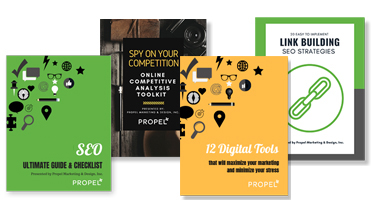Running your own email campaigns means that you will be able to customize them depending on the needs of your business.
Email marketing strategies will undoubtedly take a while to master, but that doesn’t mean that you won’t be able to run yours successfully while you’re still in the process of learning.
The best way to make sure that you are taking your mistakes into account is through having specific metrics that you will be able to review both during and at the end of your strategy.
Here are some metrics that play a significant role in the measurement of the results of your efforts.
1. CTR (Click-through rate) of links
Whether you own a blog or an online business, you will find that incorporating links of your website, social media pages as well as direct links to your products in your emails can be a good tactic for getting more clicks on your various pages.
By seeing how many people clicked on the links you provided in your email you will be able to know how effectively you promote them through your emails.
Just keep in mind that the click-through rates of links included in your emails will most likely be low.
2. Email open rate
The open rate of your emails can really show you exactly how successful your subject line is as it helps you see exactly how many people decide to click on and open the emails you send them.
Before a subscriber opens any email you send them, the very first thing they will come across is your subject line.
There are quite a few things you can do to make your subject lines more successful, and the biggest tip of all is to keep them short.
The shorter and straight to the point they are, the higher the chances of your emails being opened.
On top of that, if you go through the trouble of personalizing your emails, you should try and include your subscribers’ names in the subject lines.
If you find that you’re struggling with creating the right subject lines in all the languages you support on your website, you can always find help through professional translation services review source such as PickWriters, where you can find professional translators to ask advice on the subject lines you have come up with for your emails and their translations.
This tactic will help your messages seem much more direct and create a sense of urgency for the subscriber to open the email right away and not ignore it.
3. Mobile open rate
This essentially explains the exact same concept as your regular email open rate, but it applies to the number of people that choose to open your emails through their mobile devices.
Mobile open rate can show you several things, depending on the outcome.
If your mobile, open rates are low, that means that most people open your emails through their desktops.
This can not only help you know how much effort you need to put into optimizing your emails for mobiles but also to get a better understanding of the time you should be sending your emails.
With low mobile open rates, it is a better idea to send your emails during the late-morning hours. Your subscribers are most likely going to be at work, in front of their computers, and that gives you a much higher chance of them opening your emails.
On the other hand, if your mobile open rates are low, you are better off sending your emails in the late evening, when your subscribers will be back from work and possibly relaxing by scrolling through their phones.
4. The bounce rate of your emails
Sometimes, certain issues can take place which might not allow for your emails to be delivered in the inbox of your subscribers.
Fake or incorrectly spelled emails, full inboxes, and other issues with email addresses might cause your emails not to be received, and the email is essentially coming back to you, just like an unopened letter.
An excellent way to solve this issue, if your bounce rates are high, is to use in a double opt-in, which will require for your new subscribers to verify their email address after they submit it.
This will help you make sure that the email addressed you add on your list are legitimate and it can drastically reduce the high bounce rates.
5. Revenue per email
The revenue you receive per email is a good way to see which emails perform better and which are not worth investing time and resources into.
There is a very simple way to calculate your revenue per email and all you need to do is take the total revenue that was generated and then divide it by the number of subscribers, aka email addresses, which received your email.
In this case, you should not forget to extract the bounced emails as they did not contribute to your revenue.
Based on that, you can then focus on creating emails that seem to perform better with your audience.
6. Number of unsubscribes from your email list
The number of people you have lost from your email list is a pretty easy thing to see through your email provider, and you can easily find it in the main dashboard of your metrics dashboard.
The number of people who unsubscribe from your mailing list can show you several things about your strategy, none of which should make you feel discouraged.
You need to keep in mind that those who unsubscribe would most likely not have made a purchase even if they stayed in your mailing list and that means that your list is containing more people who will stick around for longer.
The opportunity you give your subscribers to stop receiving the content you share with them shows a lot about your work ethics and can make you seem very trustworthy in their eyes.
7. Email sharing rate
This metric will help you see how effectively your subscribers are sharing and forwarding your emails to other peers through email, or through their personal social media accounts.
This is very helpful for your brand as it will help you attract a bigger following without you having to do any promotions online by yourself.
The people that support your company and share your content are your advocates and they are the ones who will help you see not only how successfully you create your emails but also how willing they are to share your content with others.
8. Engagement of your audience over time
Another metric that can help you figure out the best time to send your emails during the week is your audience’s engagement over time.
Without taking into consideration the devices they use to open your emails; you can gain some insight into the times they open your emails and therefore be more certain about the times you should be sending them off.
This metric will help you make sure that your audience is opening your emails and it will also allow you to organize a certain schedule which will help your subscribers start to expect your emails on a certain time and day each week.
9. Your domain’s open rate
Last but not least, your domain’s open rate is a metric that can help you make sure that your emails are always being delivered.
It can essentially help you see how many people are opening your emails after they receive them, on a particular email provider.
This will help you figure out if you are encountering any issues with a domain’s spam filter which on the one hand allows your emails to be delivered but on the other hand it sends them to the junk folder, where they are easily dismissed.
10. Domain click rate
Like the domain open rate, your domain click rate will help you see if there is any problem with a certain domain’s spam policy which once again hinders your emails’ performance.
What you need to do in order to get to the root of this issue is to collect and compare the click rates between different email providers your subscribers are using.
Essentially, you will have to find the average click rates between all the providers your subscribers are using and then compare those numbers to the individual providers in order to get a result.
Making your email marketing strategy a success
Whether you’re new to running your online business or not, knowing how to organize and analyze an email strategy is a very important set of skills you will need to make your company a success.
Your email list will help you create a better connection with your subscribers, allow you to promote your products without much effort and help you increase your sales and overall website visits.
The metrics presented in this post aim towards helping you figure out where your email strategy is lacking and how you can improve it easily and successfully.
Which of these metrics are you going to start checking during your next email strategy?
Guest author: Kristin Savage nourishes, sparks and empowers using the magic of a word. Along with pursuing her degree in Creative Writing, Kristin was gaining experience in the publishing industry, with expertise in marketing strategy for publishers and authors. Now she had found herself as a freelance writer. You can find her on Facebook.




![How to Write a Professional Chiropractic Bio [Template Included]](https://propelyourcompany.com/wp-content/uploads/write-a-bio-500x383.jpg)

